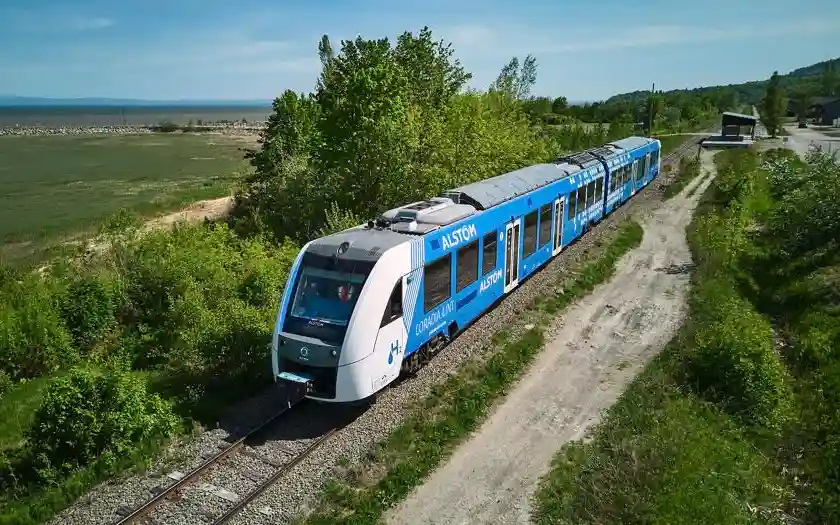Canada Launches First Hydrogen-Powered Train in North America
The Canadian countryside is now being traversed by North America’s inaugural hydrogen-powered train this summer. This French passenger train, which is a temporary showcase, will operate until the end of September with the intention of encouraging acceptance in both Canada and the US. Robert Stasko, the executive director of Ontario’s Hydrogen Business Council, expressed to CBC News that the primary outcome expected from this initiative is the enhancement of people’s knowledge and confidence in this technology.
The Canadian Borrower will run from Montmorency Falls, Quebec City, to Base-Saint-Paul – a two-and-a-half-hour journey – from Wednesday to Sunday until September 30. The train’s top speed is 140 km/h (87 mph) and its two passenger cars can accommodate 120 people. Alstom, the French company that manufactures the train, says that its acceleration and braking performance is comparable to that of regular diesel trains – without the emissions. While much of Europe uses trains with electric rails or overhead wires, hydrogen trains are ideal for places like rural Canada with long distances and relatively low commuting frequency. (Much of the US would fit that bill as well.)
The same train model, Coradia iLint, has already traveled in eight European countries. As many as 14 of the same model started running the route in Lower Saxony, Germany last year. Alstom began testing the trains in 2018 and has additional contracts in Germany, Italy and France. According to the company, European customers have ordered 41 trains.
The Coradia iLint uses “about 50 kilograms of hydrogen per day,” says Serge Harnois, CEO of Hanois Énergies, the train’s hydrogen fuel supplier. The same journey with a normal engine would burn about 500 liters of diesel fuel. During its journey, it emits only water vapor as a byproduct when hydrogen is combined with oxygen in a fuel cell to produce energy.
There are some stars attached to the three month demo. First, it requires a diesel-powered truck to deliver hydrogen to the train every time it refuels. (Harnois says that ideally, the hydrogen would eventually be produced on-site to avoid this step.) We also have to wonder about the emissions that will be generated during its supposed journey from Europe to Canada in its three-month-only demo. However, the train continues after its summer residence to other North American cities. The long-term goal is for the tour to help promote the widespread adoption of hydrogen trains in various regions of North America, which, if successful, could more than offset the carbon footprint of diesel trucks and transatlantic travel.




